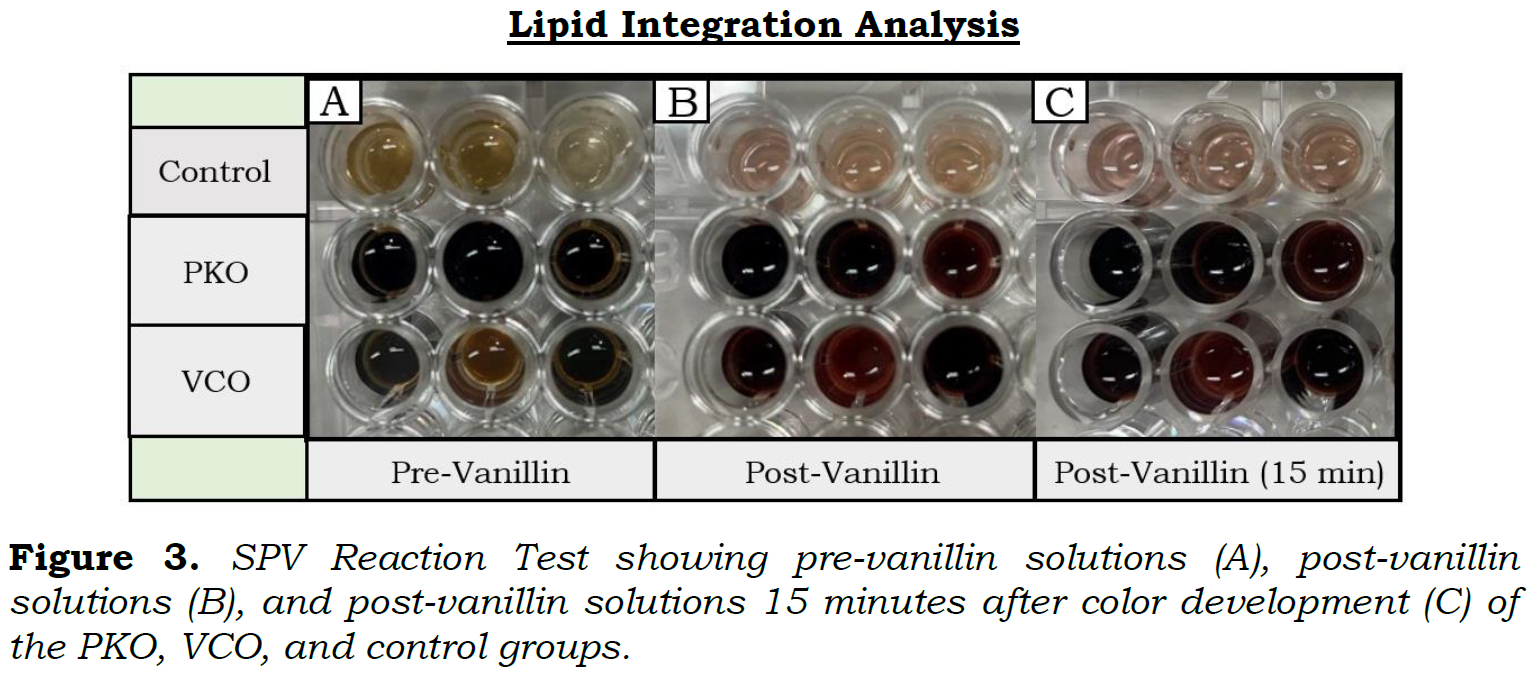IADR Abstract Archives
Anti-adhesion Potential of Pili Kernel Oil Against Initial Biofilm Colonizers
Objectives: The pili nut (Canarium ovatum) is endemic to the Philippines, specifically in the Bicol region. The kernels of pili nuts are potential sources of anti-cariogenic polyphenols. Inhibiting the adhesion of the bacteria Streptococcus mutans, the primary causative agent for dental caries, will lower the incidence of dental caries which is the most common oral disease worldwide. This study aimed to determine the effect of pili kernel oil (PKO) on inhibiting the growth and attachment of S. mutans.
Methods: Preliminary tests performed were the organoleptic test, which relied on sensory evaluation, and the Folin-Ciocalteu method to evaluate the polyphenols in pili kernel oil using gallic acid. Kirby-Bauer Disk Diffusion method was performed to test the antimicrobial susceptibility of PKO against S. mutans, while SPV method was conducted to assess the total lipids that integrated into 9 enamel blocks (n=3/group) which had undergone pellicle formation and modification. A Shapiro-Wilk and Mann-Whitney U Test was used for data analysis.
Results: PKO was found to have a nutty and woody smell, with a sweet taste. Its consistency was comparable to saliva and virgin coconut oil (VCO). Results revealed that the gallic acid content of PKO is at least 1500 times higher than the minimum required to reduce S. mutans growth by 50%. Antimicrobial susceptibility test against S. mutans showed that VCO exhibited no zone of inhibition while PKO demonstrated a mean zone of 4.6mm. No significant difference was found between the lipid integration in PKO and the positive control (VCO).
Conclusions: Overall, pili kernel oil is suitable as an additive ingredient in commercial mouth rinses or as an alternative material for oil pulling due to its palatability, high gallic acid content, antibacterial effect, and lipid integration ability.
Methods: Preliminary tests performed were the organoleptic test, which relied on sensory evaluation, and the Folin-Ciocalteu method to evaluate the polyphenols in pili kernel oil using gallic acid. Kirby-Bauer Disk Diffusion method was performed to test the antimicrobial susceptibility of PKO against S. mutans, while SPV method was conducted to assess the total lipids that integrated into 9 enamel blocks (n=3/group) which had undergone pellicle formation and modification. A Shapiro-Wilk and Mann-Whitney U Test was used for data analysis.
Results: PKO was found to have a nutty and woody smell, with a sweet taste. Its consistency was comparable to saliva and virgin coconut oil (VCO). Results revealed that the gallic acid content of PKO is at least 1500 times higher than the minimum required to reduce S. mutans growth by 50%. Antimicrobial susceptibility test against S. mutans showed that VCO exhibited no zone of inhibition while PKO demonstrated a mean zone of 4.6mm. No significant difference was found between the lipid integration in PKO and the positive control (VCO).
Conclusions: Overall, pili kernel oil is suitable as an additive ingredient in commercial mouth rinses or as an alternative material for oil pulling due to its palatability, high gallic acid content, antibacterial effect, and lipid integration ability.



